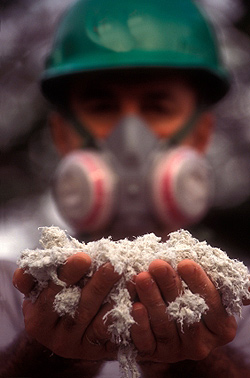Partnerships for Environmental Public Health (PEPH)
Academic Partner:
University of Cincinnati
Grace LeMasters, Ph.D.
Community Partner:
Center for Asbestos Related Disease
Brad Black, M.D.

Project Description
Because their lungs are still developing, children may be particularly sensitive to asbestos exposure and its long-term effects. Researchers at the University of Cincinnati collaborated with the Center for Asbestos Related Disease (CARD) to understand the impact of childhood exposures to asbestos, particularly the potential for childhood exposures to accelerate progression of lung disease in adulthood.
Libby, Montana is an underserved frontier community where asbestos-laden vermiculite ore was mined and processed from the 1920s until 1990. The Libby community was exposed to asbestos via ambient air pollution in homes, household contact with mine or expander plant workers, or contact with gardens, roads, and playground coverings containing vermiculite waste materials. Exposure to asbestos minerals is associated with pulmonary function loss, pleural and interstitial lung diseases, and respiratory mortality.
The project partners:
- Identified young adults who were exposed to asbestos as children in Libby, and who were screened for medical issues in 2000 and 2001. This cohort may be followed in the future to help increase knowledge regarding the public health concern of childhood exposure to Libby amphibole asbestos.
- Developed a comprehensive environmental exposure matrix to characterize their childhood exposures.
- Identified significant chest pain in the study participants.
- Developed and implemented a reciprocal outreach and communication program to share information about the research study, its progress and findings, and recommendations for Libby and other communities. CARD’s involvement resulted in significant community buy-in into the project and higher levels of trust with study participants.
Overall, this partnership sought to determine the long-term pulmonary health effects of childhood asbestos exposure and to provide knowledge to empower impacted communities. This project included an evaluation of the outreach and communication program, which helped inform residents in Libby and the 245 other communities contaminated with Libby Amphibole asbestos fibers about the level of mitigation necessary to avoid further health impacts on the children who live in these communities. Additionally, the young adults who participated in the study could use the findings to make behavioral changes to protect their lungs for the remainder of their lives.
Selected Publication:
- Ryan PH, LeMasters GK, Burkle J, Lockey JE, Black B, Rice C. 2015. Childhood exposure to Libby amphibole during outdoor activities. J Expo Sci Environ Epidemiol 25(1):4-11. [Abstract Ryan PH, LeMasters GK, Burkle J, Lockey JE, Black B, Rice C. 2015. Childhood exposure to Libby amphibole during outdoor activities. J Expo Sci Environ Epidemiol 25(1):4-11.]


